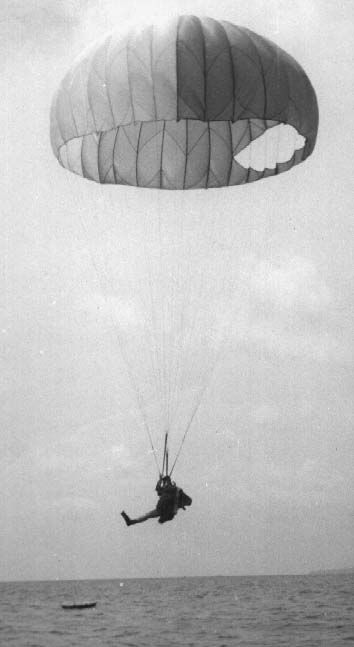Great post. I had forgotten the push-ups with doubles 90s...
...Not to hijack the thread, but what did divers have to do in the USAF? There were Sailors, Marines, and Solders in my class but no Air Force, Coasties, or foreign military.
Well, we were tasked with rescue at sea from planes:
Parascuba jump off Okinawa, which is now a part of Japan
We had a NASA mission with Gemini (got one, GT8 off Okinawa, Japan), and got the first unmanned Apollo. I knew two of the PJs who made those jumps. One was the Sargent in charge of our training, Eldridge Neal, and the other was Billy R. Smith, who jumped on Apollo 1. The GT8 mission was very worthwhile, and was the last time a manned NASA flight did not come down within the very close radius of a Navy ship.
Apollo 1 was unmanned, and was intended to find out the "skipping" properties of re-entry, and they did. It landed about 250 miles downrange of where they expected it. According to Billy, they tried twice to get the Apollo, and missed it with their drops. The way that they stopped the Apollo capsule was to drop a kit with a sea anchor and a raft, a very long rope, and a second package of a raft and sea anchor. The rope floated, and the sea anchors held the rope in Apollo's path. The Apollo capsule would be blown by the winds toward the rope, which was cross-wind and theoretically across the path of the Apollo. The rope would go over the Apollo, and catch in the hooks on top of the Apollo (deployed along with the three balloons meant to right the capsule from Stable II--upside down--to Stable I position). But the kit did not catch the capsule, and there were three pararescue jumpers who jumped on the capsule. I don't recall which one actually got it, but he was the last one to jump--it may have been Billy R. Smith. But that was the only Apollo that the USAF recovered. The Navy got the rest, and then the Shuttle landed on a runway, and splashdowns were a thing of the past.
History - USAF PARARESCUE - That Others May Live
Pararescue also jumped on ships at sea to provide medical help to injured seamen (see the article above). We had one case where two PJs jumped into the Pacific to deliver aid to an injured seaman, and one was picked up by the ship with the injured seaman, while the other was picked up by a different ship. The first went to Hawaii, and the second ship went to Japan, so it was a while before they were back in the same unit again.
Anyway, that will give you an idea of why the USAF had personnel in the US Naval School for Underwater Swimmers. Now to get the thread back on-track, we sometimes used our arms for swimming too. I remember one PJ who jumped on a NASA Apollo capsule training exercise (NASA SIMEX, or simulated exercise), with NASA and USAF personnel watching, and on the way down found that he had forgotten his fins! He simply continued the job of putting the floatation collar onto the capsule sans fins. The DIR guys would have a field day if they didn't have fins at all

SeaRat





